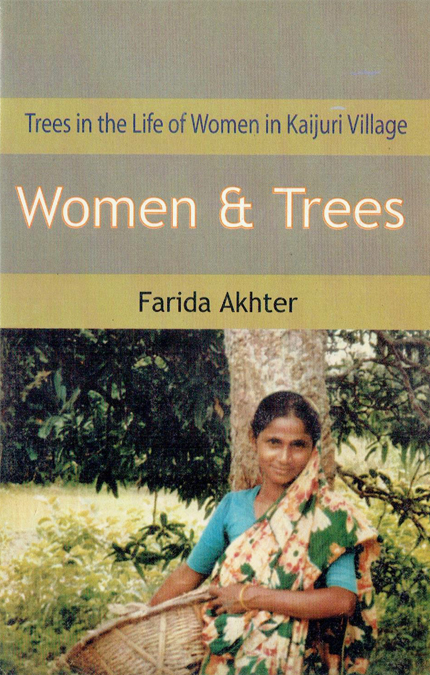Women & Trees

Women & Trees, Farida Akhter; First Edition: 1090-Sec-99-Third Edition: 2028. Published by: Narigrantha Prabartana (The Feminist Bookstore) 6/8 Sir Syed Road, Mohammadpur Dhaka-1207,
Trees in the Life of Women in Kaijuri Village. An exploratory study by UBINIG
Introduction
Trees planted on the homestead land are a normal aspect of the rural households. A mango tree, a jackfruit tree or a shimul (cotton) tree is so common that one does not even notice the presence of these trees in the rural households. These trees may act as the entrance to the house, as the border between the houses, and as part of the tree garden in the homestead. In almost all cases, one finds a bamboo bush in one corner of the homestead. One immediately feels the cool breeze around the trees. These trees are not growing on their own - there are people behind each and every tree grown in the homestead. So the role of the family members, past and present, is very significant whenever one tries to enquire about the plantation, care and ownership of the trees.
Although women's contributions to family productive activities often go unrecognised, in fact, they contribute to family's wealth in many ways, including the planting and caring of trees. The present study is an investigation into the Women and Trees role of women in the tree planting and their relation to trees in general. We can see this role also in the light of the subordinate position of women and the lack of access of women to prop- erty.
In Bangladesh, the studies carried out on forestry and trees in general reflect very little socio-economic aspects of the people behind the trees. Women's issues and concern are virtually absent in most of the studies. The present study addresses the role of women in the use and man- agement of trees in agrarian rural households.
The study is exploratory in nature. Explora- tion cannot proceed from assumption or hypoth- esis. We remained open to the empirical findings and presented the issues that we felt were impor- tant. The scope of the study did not permit us to go into the depth of these issues but we hope we have been able at least to define the parameters clearly.
The sample is small, therefore we have been careful not to generalise a finding unless it corre- sponded to our broad experiences in working in other villages of Bangladesh. The issues that has been raised are grounded in our more general experience. We have discussed our findings with the experienced villagers in order to test their validity.
Our main concern was to see how the situa- tion of women is reflected in tree planting, own ership and use.
Contents
Introduction 1
Method of information collection 7
Kaijuri Village 5
Introducing the Families Visited 7
Classification of households 7
Homestead land size and number of trees 10
Family size and number of trees 11
Occupation & the trees 13
Firewood 15
Latrine 19
Tree Planting 21
Inherited trees and the trees received from relatives Use of trees 23
Ownership of Trees 23
Claiming ownership of trees 34
Women's position in the marriage relation and tree planting 36
Daughter's marriage - a crisis of the family 38
"The children will eat the fruits" - mothers plant the trees 42
Conclusions 43
Back to album